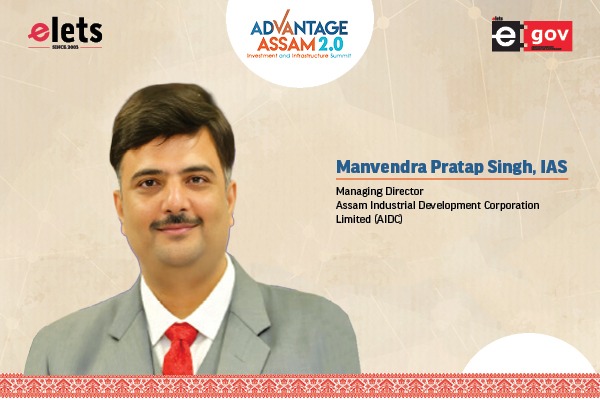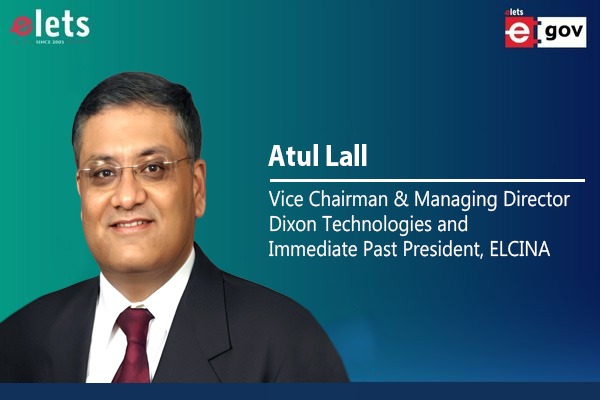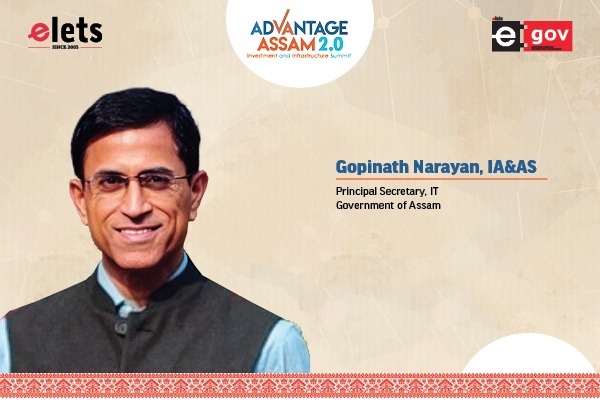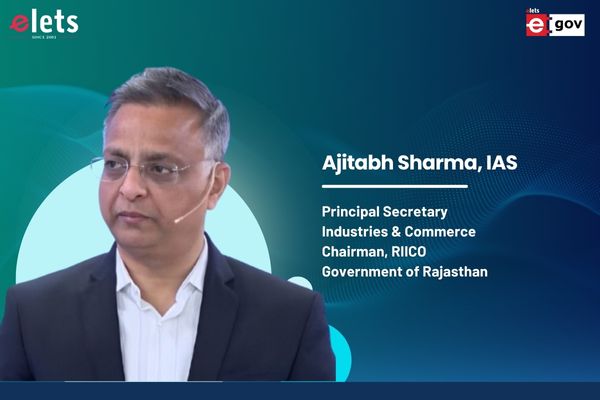What is the e- Governance vision and strategy of Tata Consultancy Services (TCS)?
The group that we have in TCS is called Global Government Industry group. This group is responsible for all of the government works that TCS does in the world. Essentially we divide the government into federal, state and local government, defense, public sector, education and health.

Our entire focus is not on input of technology but on outcome and how TCS as a systems integrator can put together hybrid technology, services, products and create a solution that is going to bring end impact. For us that is where we really score the success of technology deployment in government, not in so far as how much technology we have built up but what is it really doing for the people or the stakeholder that is really the focus. It is definitely to bring in transparency in operations. We believe today that government is all about doing more with less. You have voluntary retirement scheme (VRS), scaling down or reduction of government. At the end of it, you have increasing population base, increasing aspirations of the people. So how do you fulfill these. Proleme increase if you do not take technology to enable your operations. That is what we focus at TCS. It is essentially to look at an inclusive approach of technology deployment for government. Very often in the past, there would be technology deployment programmes which would only cater to small pockets of society and mostly it would satisfy the internal needs of the government. How can I get a report from the system was more important that what does the system really do to my customer which is the citizen. How do you bring about this paradigm transformation of the thought process, is what we are really working on. Thus, in the government industry group of TCS , we are dealing more with mind than with technology because its really about changing the mindset. Technology is the least important factor in this process. It will simply enable what you wish it to achieve. We are trying to determine and find out what is the will of government and what is it that they wish to achieve. Once that is ratified and determined, then putting a technology enabled solution to reach that is least of the challenges. That is the way we look at government.

We are focusing more on institutionalising e-Governance as compared to individualised e- Governance that has happened in the past. And you will find some of the examples like MCA21 which is a national Mission Mode Project which, regardless of whoever comes or goes, has been established as the new way of doing things in the Ministry of Corporate Affairs. So that is an example of institutionalised e-Governance as compared to the governance enablement of IT through individual spirit of very motivated civil servants .

 The other philosophy we believe in, is we would like to build the solutions in India, respond to the challenges of e-Governance in India and take this as an showcase and replicate this across the world. We believe that if one is in a position to solve complex issues such as the ones which exist in India, it would be very easy to take that as an example and replicate around the world. So unlike other companies which are basically trying to bring in solutions, we want to build in India and replicate around the world. This is the other philosophy we believe in. TCS being the largest IT services company of Asia and Africa today, we try to tell the government to stop buying IT (hardware, system software, network). Do not look at the IT as a commodity to procure. Look at IT as a service to avail. Once this mental paradigm transformation can take place, we believe that a lot of programme will actually succeed.
The other philosophy we believe in, is we would like to build the solutions in India, respond to the challenges of e-Governance in India and take this as an showcase and replicate this across the world. We believe that if one is in a position to solve complex issues such as the ones which exist in India, it would be very easy to take that as an example and replicate around the world. So unlike other companies which are basically trying to bring in solutions, we want to build in India and replicate around the world. This is the other philosophy we believe in. TCS being the largest IT services company of Asia and Africa today, we try to tell the government to stop buying IT (hardware, system software, network). Do not look at the IT as a commodity to procure. Look at IT as a service to avail. Once this mental paradigm transformation can take place, we believe that a lot of programme will actually succeed.

Not until the recent past, nobody considered citizen’s requirement to be playing any part whenever an IT programme was being developed. So the citizen never featured. It was always the intra and the inter government requirements that were considered in designing the solutions. Today, if one needs to deploy IT, one needs to look at outcome and impact fi rst. And that is the way we look at things.
The National e-Governance Plan (NeGP) has now concretised the plan and the goal of the Government of India. What is your take on this?
The e-Governance goal defi nitely has been specifi ed and lot of hard work has gone in making the NeGP roadmap . Very correctly the government has focused on core foundational programmes to be the part of the very heart of the programme which are essentially State wide Area Network (SWAN), the Common service Centres (CSCs), and the Common Data Centres (CDC). These are three defi nite foundational infrastructural pre-requisite to bring about a technological enablement of government. But we believe that along side these three extremely necessary infrastructural inputs, there is a need to parallely think of applications and solutions that are going to be exploiting these infrastructure. Otherwise what good is an infrastructure when it is laid out and there is nothing else to do. So this kind of an approach of putting the cart before the horse has to reverse on its head. One has to now think of applications ahead of infrastructure, because applications exercising its computational requirements should determine an infrastructure. Not the other way round. There is a need to look at application roadmap which is also going to co-exist and we have no time. India has to catch up.
Today India is respected the world over as the IT destination. But when we look at our own adoption of IT, there is a huge dichotomy and gap. We are perhaps the least users of IT when it comes to governance compared to the world. I have some statistics which show that we are spending per citizen every year in cents in governance and e-Governance as compared to some countries which are spending multiples of tens of dollars per person. Very often one fi nds argument that India is so diverse that nothing can work. My counter argument to it is that infact that is the fi rst factor which should cascade the dire need for bringing in automation and IT enablement.
The other phenomenon that we have here is the gross underestimation of our own citizen’s capability of adopting technologies by our government decision makers. Let us take the examples of ATM. Who has taught your plumber or my driver to use ATM? Who has taught him to send an SMS on the mobile phone? And who has taught him to go to the portal and buy a railway ticket? Nobody has. It is just that the ambience has been created. The environment of technological enablement has been created and people have readily adopted to it. How did India adopt to buying and selling of shares by these absolute traditional share brokers who knew nothing else but writing it on a piece of paper to a completely 100% technological enabled share market? Today we have a paperless share infrastructure in the country. Not a single piece of paper is moving yet crores of rupees of shares are bought and sold. So I think the decision makers should stop doubting the capabilities of the people and only focus on creating that enabled environment which is going to bring about adoption, usage and transformation.
What do you think regarding the PPP mode of implementing of the NeGP? How can the private sector add value in NeGP implementation?
We fi rmly believe that it is beyond the wherewithall of the government to do these things on their own. There is a complete need of PPP after 40 years of the history of Indian IT industry. Though it has the respect of being the global IT powerhouse, it is time for the government to start looking within the country, looking at our own IT industry and getting them to share the superior skills and technical expertise that we are respected for all over the world. A case in example is that TCS has implemented an electronic visa system for the Kingdom of Bahrain but we are not able to do it for our own country. A state-of-the- art system which involves biometrics, real time connectivity across all the airports and seaports and all of that, is what we have implemented around the world but we are not able to do it for our own country. There has been many many projects of this kind which, has been done by the IT industry in India for people around the world. This is basically because of the inability of our government to look in its own backyard instead of trying to search for things in the whole world where it exists in the country itself in terms of capability, skills, innovative capacity, absolute unique way of the engagement models that we propose and have engagements with customers world wide. It is, I would say, the inability to look at all of that.
If we look at it historically, National Informatics Centre (NIC) was created to be the IT services provider for the government and the time it was created, it was absolutely appropriate and a completely right decision to do so. However, over a period of time, there has to be transformation in the way this engagement is approached and it cannot be done in the same way it was done 20 years ago because a lot has changed. So therefore, we believe that the NIC should ideally become the programme manager for government projects and engage the IT industry in India to fast track and completely bring transformation to some of the government initiatives that are being taken around the country.
Therefore, we believe that there has to be a re-think of the strategy and a much more active involvement of the Indian IT industry in e-Governance initiatives by NIC to fast track the process. That is the real Public- Private- Partnership to us.
The Indian IT industry is absolutely ready to bring expertise, investment, money, skills, the relationship which we have with several countries around the world and we are keenly interested to bring IT to our own bretherens. TCS and many other companies have emanated and have originated, grown globally from here. We need to demonstrate this responsibility to the government that we are interested in bringing about transformation in government through IT technologies. An example is the Parliamentary Standing Committee meeting where rims of papers are generated in parliament for a two hour meeting, which has all the members and as soon as the meeting is over, all the papers are put in the dustbin. Isn’t there a technological enablement for that process? We believe that there is. But it has not been done in the past 60 years. Government works on fi les. The whole process can be digitised. The Right to Information Act has strengthened this requirement.
Please tell us about some of the projects of TCS- MCA21, AP Online and so on- implemented for the government sector to fulfi ll the latter’s goal to achieving transparency and effi ciency. What has been your experience working with the government and what are your suggestions for them for more such private sector ventures?
The projects mentioned are runaway success that have not only brought about transformation in their respective areas (company administration for MCA21 and citizen services for AP Online) but have also ushered in increased transparency and effi ciency.
For instance, it is now possible for banks to check whether a company that approaches it for working capital loan against hypothecation of the same asset that it is now offering, thereby obviating fraud.
Similarly, the availability of a proposed name for a company can be ascertained online without multiple meetings with MCA offi cials. In the case of AP Online citizens now directly contact the chief minister fo the state to redress their grievances. This has defi nitely brought about speedier grievance redressal and faster resolution to pressing citizens’ problems.
How can India Portal mission mode project facilitate the vision for ‘single-window’ for all G2C/G2B transactions?
There is a crying need for a single window for all G2C and G2B transactions. Currently, businesses and citizens have to approach muliple agencies for a single transaction, which is counter-productive. Foreign businesses often complain that they have to navigate a bureaucratic maze for establishing and running a business in India. This is not in our interest and results in reduction of Foreign Direct Investment, something that India needs acutely.
The MCA21 project is a step in this direction but more needs to be done. The government should explore the possiblity of using a single gateway for all G2B transactions and must not create multiple gateways otherwise the purpose will not be met.
How is TCS leveraging in cross-organisation process and system integration expertise to help government bodies worldwide be more effi cient?
TCS levarages its global experience to implement best practices in governance gained by working with governments worldwide. This is possible because there is a commonality in government working across the globe. For instance, governments of Commonwealth countries all follow similar processes embodied in the Witehall and Totenham system of administrative processes.
How big is the e-Government market worldwide? What are your plans to expand TCS market in India and abroad?
The e-Government market worldwide is very signifi cant. If you add the present and proposed spend by goverments in this area it is a signifi cant fi gure. We are focussed on implementing replicable solutions across governments that not only reduce cost of ownership but also mitigate risks associated with large IT implementations since these solutions have been implementated in multiple places and are robust and evolved. Also, our focus is outcome based implementations that seek to achieve certain outcomes as compared to just deploying IT.
Be a part of Elets Collaborative Initiatives. Join Us for Upcoming Events and explore business opportunities. Like us on Facebook , connect with us on LinkedIn and follow us on Twitter, Instagram.
"Exciting news! Elets technomedia is now on WhatsApp Channels Subscribe today by clicking the link and stay updated with the latest insights!" Click here!













